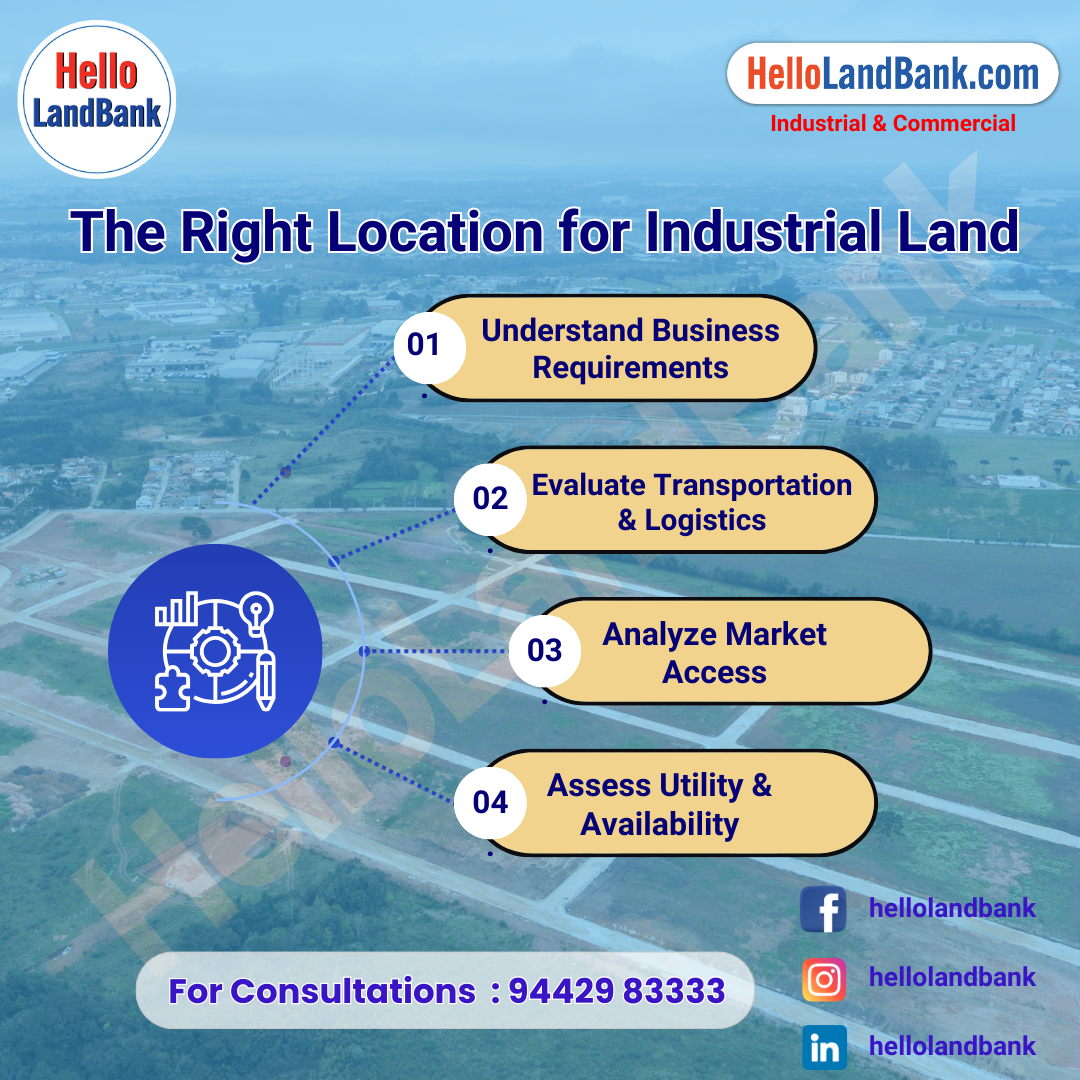Determining the right location for industrial land involves a strategic evaluation of various factors to ensure the site meets the specific needs of your business. Here’s a step-by-step guide to help you determine the right location:
.
1.Understand Business Requirements:
- Operational Needs: Identify the specific requirements of your business operations, such as the need for large open spaces, proximity to raw materials, or special facility needs.
- Growth Plans: Consider your long-term growth plans and ensure the location can accommodate future expansion.
2. Evaluate Transportation and Logistics:
- Proximity to Major Highways: Ensure easy access to major highways for efficient transportation of goods.
- Access to Ports and Airports: If your business involves international trade, proximity to ports and airports is crucial.
- Rail Access: For businesses that rely on rail transport, proximity to rail lines or terminals is important.
3. Analyze Market Access:
- Customer Base: Choose a location that is convenient for your primary customer base to reduce delivery times and costs.
- Supplier Network: Ensure the location is close to key suppliers to streamline the supply chain and minimize transportation costs.
4. Assess Utility and Infrastructure Availability:
- Utilities: Confirm the availability and reliability of essential utilities such as electricity, water, gas, and sewage.
- Telecommunications: Ensure access to high-speed internet and other communication networks.
5. Consider Workforce Accessibility:
- Labor Pool: Ensure the location has access to a skilled labor force suitable for your industry.
- Commute: Consider the ease of commute for employees, including proximity to public transportation and major roads.
6. Evaluate Regulatory Environment:
- Zoning Laws: Ensure the land is zoned for industrial use and check for any restrictions or future zoning changes.
- Environmental Regulations: Be aware of local, state, and federal environmental regulations that may impact your operations.
7. Analyze Economic and Market Conditions:
- Land Costs: Evaluate the cost of land in the area and compare it with other potential locations.
- Property Taxes and Incentives: Consider the property tax rates and any available tax incentives or abatements.
- Market Trends: Research market trends to understand the future value and potential appreciation of the land.
8. Investigate Community and Quality of Life:
- Local Amenities: Consider the availability of amenities such as housing, schools, healthcare, and recreational facilities for employees.
- Community Impact: Evaluate the potential impact of your business on the local community and vice versa.
9. Conduct Site Visits and Feasibility Studies:
- Site Visits: Visit potential locations to assess the suitability of the land and surrounding area.
- Feasibility Studies: Conduct feasibility studies to evaluate the technical, financial, and operational viability of the site.
10. Seek Professional Advice:
- Real Estate Experts: Consult with real estate experts who specialize in industrial properties to gain insights and guidance.
- Legal and Financial Advisors: Engage legal and financial advisors to navigate the complexities of purchasing industrial land.
By thoroughly analyzing these factors and aligning them with your business needs, you can determine the right location for industrial land that will support your operational efficiency and growth objectives.




